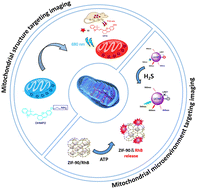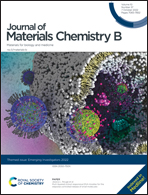Recent advances in nanotechnology mediated mitochondria-targeted imaging
Abstract
Mitochondria play a critical role in cell growth and metabolism. And mitochondrial dysfunction is closely related to various diseases, such as cancers, and neurodegenerative and cardiovascular diseases. Therefore, it is of vital importance to monitor mitochondrial dynamics and function. One of the most widely used methods is to use nanotechnology-mediated mitochondria targeting and imaging. It has gained increasing attention in the past few years because of the flexibility, versatility and effectiveness of nanotechnology. In the past few years, researchers have implemented various types of design and construction of the mitochondrial structure dependent nanoprobes following assorted nanotechnology pathways. This review presents an overview on the recent development of mitochondrial structure dependent target imaging probes and classifies it into two main sections: mitochondrial membrane targeting and mitochondrial microenvironment targeting. Also, the significant impact of previous research as well as the application and perspectives will be demonstrated.

- This article is part of the themed collection: Journal of Materials Chemistry B Emerging Investigators


 Please wait while we load your content...
Please wait while we load your content...